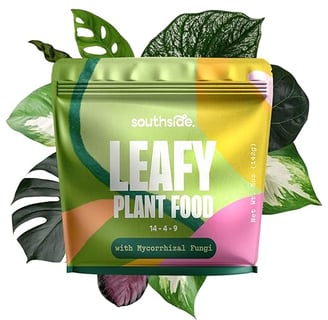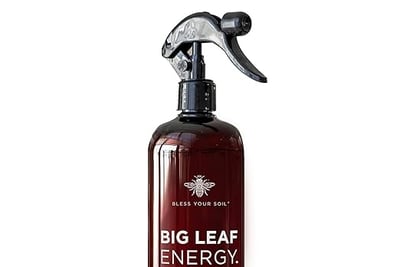The Easiest Plants to Grow for Those Lacking a Green Thumb
8 min read


Understanding Your Planting Limits
The concept of having a "green thumb" often deters many aspiring gardeners from nurturing their plant care skills. This notion implies that only a select few possess an inherent ability to cultivate and maintain healthy plants. However, this is simply not true. Gardening is a multifaceted skill that can be learned through practice and patience. Many individuals experience setbacks or failures in their initial attempts, leading them to believe that they lack the requisite abilities for successful gardening.
One common misconception is that gardening requires extensive knowledge or formal education. In reality, anyone can develop their skills through experience, research, and trial and error. Basic horticultural principles can often be grasped quickly, allowing individuals to start with easy-to-manage plants. It is essential to shift the mindset from viewing plant care as an exclusive talent to recognizing it as a series of achievable tasks. By fostering a positive and open attitude toward gardening, you may find that your so-called limitations will quickly diminish.
Furthermore, understanding your environment plays a pivotal role in successful gardening. Factors such as light availability, climate, and soil type can greatly influence plant growth. By taking the time to research and embrace these elements, even novice gardeners can identify the most suitable plants for their particular situation. It is also important to recognize that preferences and inspirations can guide plant choices. By choosing varieties that resonate with you, there is a higher likelihood of maintaining interest and commitment to their care.
As you reflect on your plant care journey, remember that every gardener has faced challenges and moments of doubt. Embrace these as opportunities for growth rather than indicators of failure. With the right mindset, anyone can develop a rewarding relationship with plants, transforming perceived limitations into newfound confidence.
Why Choose Low-Maintenance Plants?
For individuals who lack a green thumb, selecting low-maintenance plants is an essential step to cultivating a successful indoor or outdoor garden. These plants demand minimal attention, making them particularly suitable for beginners or those with busy lifestyles. By requiring less frequent watering, pruning, and fertilization compared to more demanding species, low-maintenance plants can fit easily into even the most hectic schedules. This characteristic allows new gardeners to engage with gardening without the overwhelming responsibility that often accompanies traditional plant care.
Low-maintenance plants not only reduce the workload associated with gardening but also serve as a source of reassurance for novices. When individuals witness the effortless growth of these resilient specimens, they gain confidence in their ability to nurture living things. This small success can ignite a passion for gardening, encouraging further exploration into more challenging varieties in the future. Low-maintenance plants offer a forgiving introduction to horticulture, promoting a positive experience that can lead to a deeper appreciation of plant care.
Additionally, these plants can still contribute to the aesthetic appeal of any space, bringing life and vibrancy to otherwise dull environments. Succulents, snake plants, and pothos are prime examples of low-maintenance options that yield stunning visual results while requiring very little upkeep. Their unique forms and rich colors can enhance home decor and improve air quality, offering substantial benefits without the steep learning curve of high-maintenance botanical choices. Ultimately, opting for low-maintenance plants allows individuals to enjoy gardening in a fulfilling, stress-free manner, making it accessible to those who may have previously hesitated to embark on this rewarding journey.
Top 5 Easiest Plants to Grow
For individuals who often find themselves struggling with plant care, selecting the right plants is key to nurturing a thriving indoor or outdoor garden. Here are five exceptionally easy plants that beginners can cultivate with minimal effort and successful results.
1. Pothos (Epipremnum aureum): Often hailed as one of the most forgiving houseplants, pothos is renowned for its trailing vines and heart-shaped leaves. Thriving in a range of light conditions, from low light to bright, indirect sunlight, pothos only requires watering when the top inch of soil feels dry. This makes it ideal for those who may forget to water regularly.
2. Snake Plant (Sansevieria trifasciata): The snake plant is another resilient option, known for its upright, sword-like leaves. It can tolerate a variety of lighting conditions, including low light, and requires infrequent watering, making it perfect for new plant enthusiasts. Additionally, its air-purifying qualities add to its appeal.
3. Succulents: These hardy plants come in various shapes, sizes, and colors, making them visually appealing and fun to grow. Succulents require bright light and well-draining soil, along with infrequent watering—ideal for those who may not have a consistent watering routine. Their drought-resistant nature means they can thrive in less-than-ideal circumstances.
4. ZZ Plant (Zamioculcas zamiifolia): The ZZ plant is notable for its glossy leaves and ability to survive in low-light environments. This plant requires minimal care, with watering only necessary when the soil has completely dried out. Its durability makes it an excellent choice for beginners or busy lifestyles.
5. Spider Plant (Chlorophytum comosum): Spider plants are celebrated for their arching green leaves adorned with white stripes and their ability to produce baby plants, or "pups." They thrive in a wide range of light conditions and are relatively low-maintenance, making them a delightful addition to any space.
These plants represent ideal choices for beginners or anyone lacking a green thumb, combining aesthetic appeal with straightforward care routines. Cultivating these varieties can be a rewarding experience, fostering confidence in one's ability to care for plants.
Basic Plant Care Tips for Beginners
Caring for plants can seem daunting for individuals who may not consider themselves naturally skilled in gardening. However, grasping some basic plant care tips can significantly improve your experience and success rate. One of the fundamental aspects of plant care is understanding watering frequency. Most easy-to-grow houseplants prefer to dry out a bit between watering. A good rule of thumb is to check the top inch of the soil; if it feels dry, it’s typically time to water. Overwatering is one of the most common pitfalls for new plant owners, so ensure that pots have drainage holes to prevent water from accumulating at the bottom.
Another crucial factor for plant health is light requirements. Different plants thrive in varying light conditions, from low light to bright, indirect sunlight. Research the specific lighting needs of your plants and position them accordingly. For example, succulents tend to need more light, while ferns can thrive in lower light settings. Always observe your plants; if they start stretching toward the light or their leaves lose color, it may indicate they require more illumination.
Soil type also plays a pivotal role in plant care. Most easy-care plants prefer well-draining potting soil, which allows air to circulate around the roots while retaining necessary moisture. Additionally, incorporating elements such as perlite or vermiculite can enhance drainage. Learning to recognize signs of distress in plants is equally vital. Common indicators include yellowing leaves, stunted growth, or visible pests. Each sign signifies that the plant may need adjustments in care, like changing the watering schedule or checking for pests.
By adhering to these basic plant care tips, individuals lacking a green thumb can cultivate their confidence and foster healthy, thriving plants in their spaces.
Creating the Perfect Growing Environment
Establishing an optimal growing environment is essential for nurturing plants, particularly for individuals who may not possess extensive gardening experience. Several fundamental factors should be considered, including light conditions, temperature preferences, and humidity levels, as well as the appropriate location for each type of plant.
Light is one of the most critical components for plant growth. Most plants require a considerable amount of indirect sunlight, though some thrive in low-light conditions. Understanding the specific light requirements of each plant is essential; for example, succulents and cacti enjoy bright, direct sunlight, while ferns and snake plants are more suited to shaded areas. To create the best environment, consider placing plants near windows with filtered light or utilizing grow lights when natural light is insufficient.
Temperature preferences vary amongst different species; thus, maintaining an appropriate range is crucial. Indoor plants generally favor temperatures between 65°F and 75°F (18°C to 24°C). It's advisable to avoid sudden temperature fluctuations, which can stress plants. Additionally, some plants like tropical varieties appreciate warmer environments, while others, such as succulents, might fare better in slightly cooler conditions during their dormant periods.
Humidity is another essential factor to consider for plant health. Many houseplants thrive in a humidity range of 40% to 60%. If you are in a drier climate or during winter months, using a humidifier or placing a water tray with pebbles beneath the plant can help maintain necessary moisture levels. Moreover, it is important to consider the location of each plant; grouping humidity-loving plants together can create a microclimate conducive to their needs.
By attentively addressing these environmental factors—light, temperature, humidity, and location—you can significantly enhance the success rate of your plant cultivation endeavors, even if you lack a seasoned green thumb. A well-considered growing environment paves the way for healthy, vibrant plants.
Troubleshooting Common Issues
Growing plants can be a fulfilling hobby, even for individuals who may not consider themselves particularly skilled in gardening. However, various challenges can arise during the cultivation of plants, and understanding how to troubleshoot these common issues is essential for maintaining plant health and vitality.
Overwatering is one of the most prevalent problems that novice gardeners encounter. Symptoms include yellowing leaves, wilting, and a damp odor from the soil. To remedy this issue, it's crucial to allow the soil to dry out before the next watering. A well-draining potting mix can help mitigate this problem by allowing excess water to escape. Additionally, using pots with drainage holes is vital in preventing water from pooling at the bottom, which can lead to root rot.
Pests may also present significant challenges to plant health. Common culprits include aphids, spider mites, and mealybugs. To identify an infestation, inspect the plant regularly for signs of tiny insects or webbing. The application of insecticidal soap or neem oil can provide an effective solution for these unwanted visitors. For minor infestations, manually removing the pests using a damp cloth or rinsing the affected area with water may suffice.
Nutrient deficiencies, often marked by unusual leaf coloration or stunted growth, can occur if plants are not receiving sufficient nutrients. Assessing the specific needs of your plants and providing the appropriate fertilizers can help address these deficiencies. A balanced, slow-release fertilizer is a good choice for those who may forget to fertilize regularly.
Ultimately, encountering issues with plants is an opportunity for learning. Identifying symptoms and implementing solutions offers a broader understanding of plant care, enhancing the overall gardening experience. As challenges arise, taking a thoughtful and proactive approach will ultimately lead to a more rewarding interaction with your plants.
The Joy of Houseplants: Benefits Beyond Aesthetics
Houseplants offer numerous benefits that extend far beyond their visual appeal. One significant advantage of incorporating plants into your indoor environment is their ability to improve air quality. Various species are known to filter common indoor pollutants, such as formaldehyde, benzene, and carbon monoxide. By reducing these harmful substances, houseplants contribute to a healthy living space and promote overall well-being. Studies have shown that active plants can increase humidity levels and lower the incidence of respiratory issues. Therefore, adding greenery to your home not only brightens the atmosphere aesthetically but also supports better air quality.
In addition to enhancing the environment, houseplants have been shown to positively affect mood and mental health. Engaging with plants has a calming effect, promoting relaxation and reducing feelings of stress. Research suggests that caring for plants can lead to a sense of fulfillment and accomplishment, especially for those who may lack experience in gardening. The simple act of nurturing a living organism can foster feelings of responsibility, encouraging individuals to develop a routine and engage with their environment in a meaningful way. This bond between the caretaker and the plants can improve emotional health, offering a source of comfort and joy.
Moreover, houseplants can stimulate creativity and productivity. The presence of greenery in workspaces has been linked to increased focus and concentration, making it easier to engage in tasks without feeling overwhelmed. By decorating your home with beautiful plants, you can create an inviting sanctuary that encourages both relaxation and productivity. It is essential to recognize that growing houseplants is more than just a trend; it is a viable way to enhance your lifestyle, foster positive emotions, and cultivate a deeper connection with nature. Embracing this journey can transform your living space, providing both aesthetic pleasure and numerous psychological benefits.











